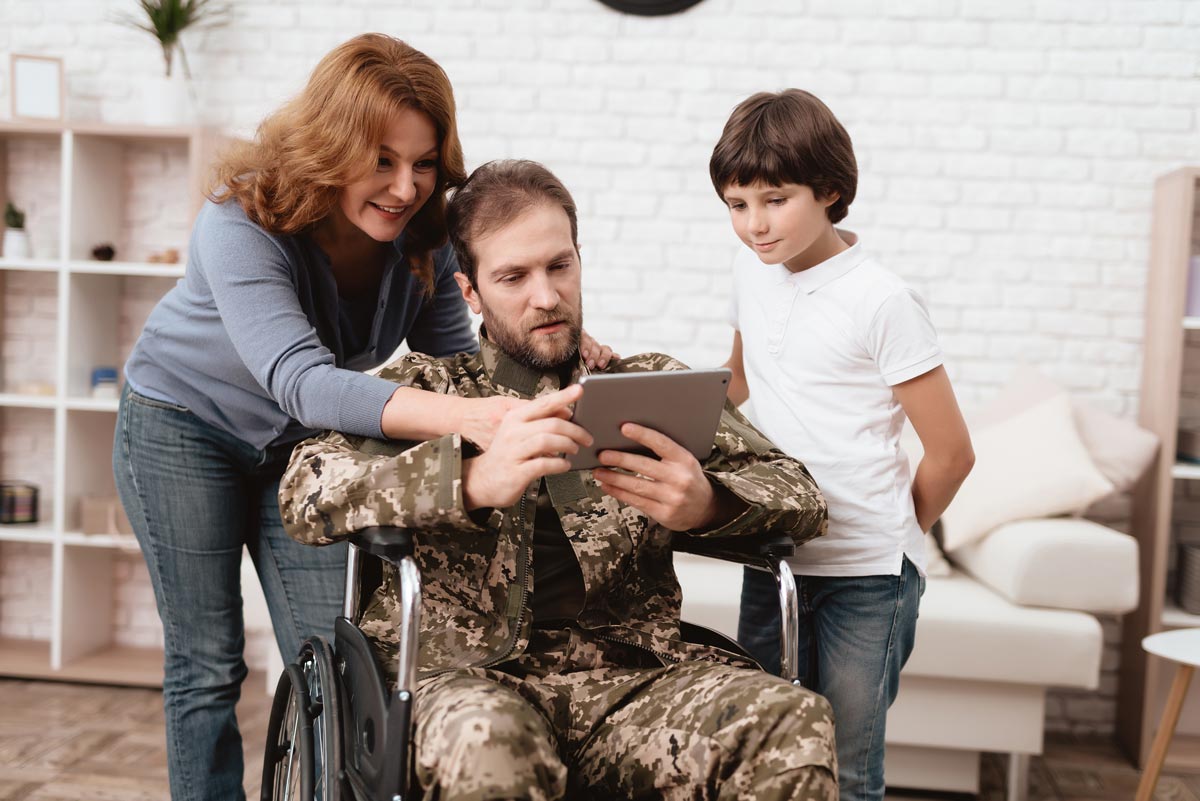When we consider whether Social Security will pay for a stair lift, we need to explore how it provides financial support. Social Security primarily focuses on retirement, disability, and income assistance, not directly covering stair lifts. However, there are other avenues we can investigate to find potential support for this type of home modification. Let’s explore the options available, from state-specific programs to nonprofit organizations, and uncover the possibilities.
Key Takeaways
- Social Security does not directly cover stair lift costs for individuals.
- SSI provides financial support but doesn't specifically fund stair lift purchases.
- MedicaidA U.S. government program that provides health coverage to eligible low-income individuals, includin... may cover stair lifts if deemed medically necessary, depending on state programs.
- MedicareA U.S. federal health insurance program for people aged 65 and older, and for some younger people wi... generally doesn't cover stair lifts, but Medicare Advantage might offer additional benefits.
- Nonprofit organizations and state assistance programs may offer financial aid for stair lifts.
Understanding Social Security Benefits

Social Security benefits are an essential part of financial planning for many of us as we approach retirement. They provide a safety net that helps support our living expenses when our regular income decreases.
Understanding how these benefits work is vital for maximizing what we receive.
First, we need to know that our benefits are calculated based on our lifetime earnings and the age at which we choose to retire. It's important to realize that claiming benefits earlier can reduce the monthly amount, while delaying claims might increase it.
Let's also remember that Social Security is designed to replace a portion of our pre-retirement income, not all of it.
Types of Social Security Programs
When it comes to Social Security, there are several programs designed to support different needs, ensuring we've options tailored to our unique situations.
To begin with, Social Security Disability Insurance (SSDI)A U.S. government program that provides financial assistance to individuals who are unable to work d... provides benefits to those who've worked and paid Social Security taxes but can't work due to a disability. It's vital for individuals with a work history who are facing unexpected health challenges.
Then there's Supplemental Security Income (SSI), which supports people with limited income and resources who are disabled, blind, or aged 65 and older. Unlike SSDI, SSI isn't based on work history.
Finally, we've the Retirement Insurance Benefits, offering financial support to retirees who’ve contributed to Social Security through their careers. Each program serves distinct purposes, addressing diverse financial needs.
Eligibility for Disability Benefits
Understanding eligibility for disability benefitsFinancial assistance provided to individuals who are unable to work due to a disability, such as Soc... is vital for anyone managing the complexities of Social Security. We need to know that eligibility hinges on a few key factors.
To begin with, our disability must be severe enough to markedly limit our ability to perform basic work activities. It's imperative that this impairmentA loss or abnormality of a body structure or function, whether physical, mental, or sensory, often a... is expected to last at least a year or result in death. Additionally, we must have sufficient work credits, which depend on our age when the disability occurs.
Let's also remember that the Social Security Administration (SSA) uses a strict definition of disability. We must demonstrate that we can't engage in substantial gainful activity.
It's a good idea to gather extensive medical documentation and work history to support our claims. This preparation can make a notable difference in the application process.
What Is Considered Durable Medical Equipment?
Even though managing medical needs can be challenging, understanding what qualifies as durable medical equipment (DME) is fundamental for ensuring we get the support we need.
DME refers to medical devices and equipment that can withstand repeated use and are used primarily for medical purposes. It’s essential to recognize which items fall under this category, as they can considerably improve our quality of life.
Here’s a helpful list of common DME:
- Wheelchairs: Important for those with mobility challenges.
- Hospital beds: Adjustable beds that enhance comfort and care.
- Walkers and canes: Assistive devices for balance and stability.
- Oxygen equipment: Critical for individuals with respiratory issues.
- Blood sugar monitors: Necessary for managing diabetesA chronic condition where the body cannot produce or properly use insulin, leading to high blood sug....
Criteria for Medical Necessity
To guarantee we receive the right support, it’s vital to comprehend the criteria for medical necessity. Essentially, medical necessity means that a stair lift isn't just a convenience but a requirement for our health and safety.
Our healthcare provider must determine that without the stair lift, our daily activities and overall well-being would be greatly hindered. We’ll need a thorough evaluation, often involving documentation from a doctor, explaining how the stair lift addresses specific medical conditions or mobility challenges.
It’s important to gather and present compelling evidence of our needs. This may include detailed medical records, notes on how a stair lift prevents falls, and proof of how it improves our quality of life.
Understanding these criteria empowers us to advocate effectively for our needs.
Medicare and Medicaid Coverage Options
Having established the importance of medical necessity, let's explore how Medicare and Medicaid can assist in acquiring a stair lift.
Medicare typically doesn't cover stair lifts since they're considered home modifications. However, Medicaid might help depending on state-specific waivers and programs.
Here's how we can navigate these options:
- Medicare Advantage (Part C): Some plans offer additional benefits that may cover stair lifts.
- Medicaid Waivers: Check if your state provides Home and Community-Based ServicesPrograms that provide support to individuals with disabilities in their own communities, rather than... (HCBS) waivers.
- State Programs: Certain states have programs for home modifications for seniors or those with disabilities.
- Financial Assistance Programs: Look into state-based financial aid specifically for home accessibilityThe design of products, devices, services, or environments to be usable by people with disabilities.....
- Consult with Providers: Speak with your health provider or local Medicaid office to understand your eligibility.
Exploring Supplemental Security Income (SSI)
Let's take a closer look at how Supplemental Security Income (SSI) might help with the costs of stair lifts.
We'll first explore the eligibility criteria for SSI, which is essential for understanding who can access this financial assistance.
Then, we'll examine whether SSI can cover or assist with the expense of installing a stair lift in your home.
SSI Eligibility Criteria
When considering eligibility for Supplemental Security Income (SSI), it’s important to understand the specific criteria that determine who qualifies for this crucial financial support.
SSI helps those with limited income and resources, and knowing the requirements can make the process smoother for us. To qualify, we must meet several conditions:
- Age or Disability: We need to be 65 or older, blind, or disabled.
- Income Limits: Our income must be below a certain threshold.
- Resource Limits: Personal assets shouldn't exceed specific limits.
- Citizenship or Residency: We must be U.S. citizens or qualifying non-citizens.
- Living Arrangements: Our living situation can affect eligibility.
Stair Lift Coverage
While steering through the complexities of Supplemental Security Income (SSI), many of us wonder if stair lifts, essential for maintaining mobility in our homes, are covered.
Unfortunately, SSI doesn’t directly cover the cost of stair lifts. SSI provides financial assistance to meet basic needs like food, clothing, and shelter for those with limited income.
However, there’s still hope. We can explore alternative resources or programs that might help. Some states or local agencies offer financial assistance or grants for home modifications, including stair lifts.
Additionally, Medicaid, a separate program from SSI, may sometimes cover stair lifts if they're deemed medically necessary.
It's vital for us to research and reach out to local resources that might bridge the gap where SSI doesn’t.
State and Local Assistance Programs
Let's explore how state and local assistance programs can help us with stair lift costs.
First, we need to understand the eligibility criteria for these programs, which can vary by location.
Once we realize we're eligible, we'll go through the application process to access these valuable resources.
Eligibility for Assistance Programs
How can we navigate the maze of eligibility for state and local assistance programs when considering the installation of stair lifts?
It’s vital to understand the criteria that might qualify us for financial aid. Let’s explore the key factors:
- Income Level: Many programs assess eligibility based on household income, often prioritizing low-income families.
- Disability Status: Verification of a disability can be essential, as some programs specifically support individuals with mobility challenges.
- Age Requirements: Some assistance is exclusively for seniors, typically those over a certain age, like 60 or 65.
- Residency: Proof of residency within the state or locality offering the program is often a must.
- Medical Necessity: Documentation from a healthcare provider may be required to prove the stair lift’s necessity.
Understanding these factors helps us determine our potential eligibility.
Application Process Steps
Maneuvering the application process for state and local assistance programs can seem intimidating, but understanding the steps involved simplifies the journey.
First, we should gather all necessary personal and financial documents—these might include proof of income, residency, and medical necessity for a stair lift.
Next, we need to identify the specific state and local programs available in our area, as each has unique requirements.
After selecting the right program, fill out the application thoroughly, ensuring all sections are complete and accurate. It’s essential to submit the application by the specified deadline.
Finally, let's keep a copy for our records and follow up to confirm receipt and track the application's progress. This proactive approach helps us stay informed and organized.
Nonprofit and Charitable Organizations
When considering support options for those needing stair lifts, we shouldn’t overlook the significant role nonprofit and charitable organizations play.
These groups often provide essential assistance, making stair lifts more accessible to those in need. They offer various forms of support, and it's important we explore these avenues.
- Funding Assistance: Many organizations offer grants to help cover the cost of stair lifts.
- Equipment Lending: Some nonprofits lend stair lifts, providing temporary solutions.
- Resource Connection: They can connect us with other resources and support networks.
- AdvocacyThe act of arguing in favor of, supporting, or defending the rights and interests of individuals or ...: Charitable groups often advocate for accessible home modifications.
- Education: They offer valuable information on stair lift options and installation.
Financing and Payment Plans for Stair Lifts

Let's explore how we can make stair lifts more affordable for everyone.
By considering monthly payment plans and various financial assistance programs, we can ease the financial burden.
Together, we'll find the best option that fits your budget.
Affordable Stair Lift Options
Although the cost of installing a stair lift can seem intimidating, there are numerous affordable options available that make this valuable addition accessible to more people.
Let’s explore some ways we can ease the financial burden and find a solution that fits within our budget:
- Used Stair Lifts: Purchasing a gently used stair lift can considerably reduce costs without sacrificing quality.
- DIY Installation: If we're handy, installing the stair lift ourselves can save on professional installation fees.
- Local Grants and Assistance: Some local organizations offer financial assistance or grants for home modifications.
- Non-Profit Programs: Certain non-profits focus on providing stair lifts to those in need at reduced prices.
- Insurance Coverage: It's worth checking if our health insuranceA system for paying for medical services, often covering preventive, diagnostic, and treatment costs... policy covers part of the stair lift cost.
Monthly Payment Plans
If the upfront cost of a stair lift seems intimidating, monthly payment plans can offer a more manageable solution. We can break down the total cost into smaller, digestible amounts that fit our budget.
Many stair lift providers recognize the financial strain a one-time payment might cause, so they offer financing options that spread the cost over several months or years. This approach allows us to enjoy the benefits of a stair lift without the immediate financial pressure.
When choosing a payment plan, it's vital to understand the terms, interest rates, and any potential fees involved. By carefully reviewing these elements, we guarantee the plan aligns with our financial situation, making it easier to accommodate this essential home improvement.
Financial Assistance Programs
Managing the myriad of financial assistance programs available for stair lifts can be overwhelming, but it's crucial for those of us seeking affordable solutions.
We need to explore our options, as they can greatly reduce costs and improve accessibility in our homes. Here are some programs and options we might consider:
- Medicaid Waivers: Some states offer waivers that cover home modifications, including stair lifts.
- Veterans Affairs: If we're veterans, we might qualify for grants to help with stair lift expenses.
- State Assistance Programs: Various states have programs specifically aimed at helping residents with mobility challenges.
- Nonprofit Organizations: Some nonprofits offer financial aid for home accessibility equipment.
- Local Community Resources: Our local government or community organizations might've funds or loan programs available.
Exploring these options guarantees we make informed choices.
Conclusion
To sum up, while Social Security itself doesn’t cover stair lifts, we've highlighted several avenues you can explore for assistance. Let’s remember that Medicaid, state programs, and nonprofit organizations might offer support. It's crucial to research these options thoroughly, considering criteria like medical necessity and eligibility. Don’t forget financing and payment plans as viable solutions too. Together, we can find ways to make home modifications more affordable and improve accessibility for those in need.






